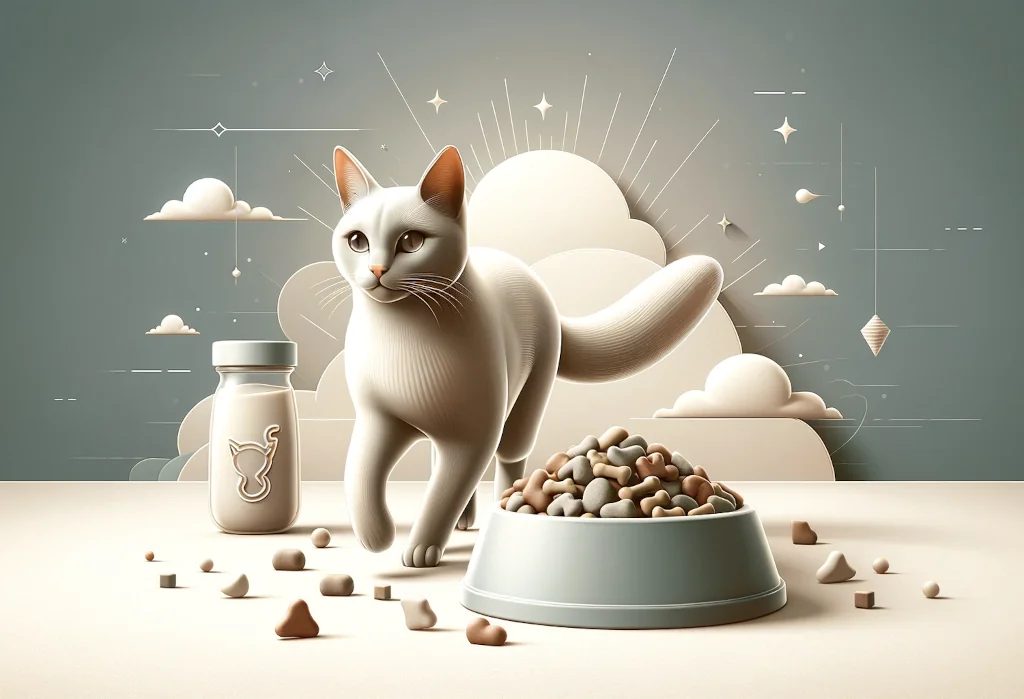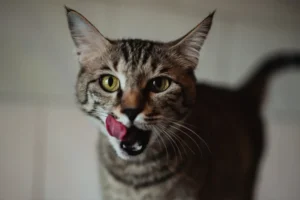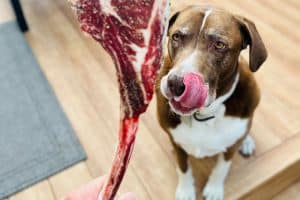Ever noticed your cat dozing off more than exploring? Or perhaps it’s zipping around when you’re ready for bed? What goes into their bowl might be the culprit behind those energy peaks and crashes. This blog post promises to guide you through the specific ways your cat’s diet influences their energy levels and behavior.
Key takeaways:
- Opt for cat foods with high-quality meat as the first ingredient to ensure a protein-rich diet.
- Avoid high-carbohydrate and artificially added ingredients to prevent energy crashes and behavioral issues.
- Consult your vet for tailored advice, especially for cats with specific health needs or behaviors.
How Does Nutrition Impact My Cat’s Energy?
When it comes to our feline companions, we all want them to have the purr-fect blend of playfulness and rest. What you might not realize is how much of a role their diet plays in striking this balance. At the heart of it, protein, fats, and carbohydrates are the main energy players.
Proteins are the cornerstone of a cat’s diet, acting as their primary energy source. Cats are obligate carnivores, which means their bodies are designed to thrive on nutrients found in animal products. These provide the essential amino acids they need to keep their energy levels up and maintain healthy muscles.
Fats are another critical component, supplying a concentrated source of energy. They also support cell structure and the absorption of certain vitamins. A pinch of healthy fats can go a long way in keeping your cat’s energy consistent throughout the day.
On the other hand, carbohydrates can be a bit of a gray area for cats. While they can derive energy from carbs, their bodies are much better suited to metabolizing proteins and fats. A high-carbohydrate diet, especially one filled with grains, might lead to weight gain and energy crashes, which is the last thing any cat parent wants.
A balanced diet tailored to your furry friend’s age, size, and activity level can keep them both spry and serene. Keep an eye out for high-quality commercial foods that prioritize animal proteins and provide fats and carbohydrates in moderation.
What Foods Should I Avoid to Keep My Cat’s Behavior in Check?
Walk down any pet food aisle, and you’ll be bombarded with choices. But when you’re aiming to keep your cat’s behavior even-keeled, there are a few things you’ll want to sidestep:
-
High Carbohydrate Content : As mentioned, cats are naturally geared to process proteins and fats over carbohydrates. Foods laden with grains and fillers can lead to spikes in energy followed by significant drops, which might explain why Fluffy zooms around post-dinner then crashes.
-
Artificial Additives : Colors, flavors, and preservatives might make food more appealing to some cats, but they can also lead to hyperactivity and other behavioral changes. Whenever possible, opt for foods with minimal and natural ingredients.
-
Certain Proteins and Allergens : Some cats can be sensitive or allergic to specific proteins, which can manifest in both physical and behavioral symptoms. If you notice your cat acting out or appearing unusually lethargic, it might be worth exploring a diet elimination trial under the guidance of your vet.
What many don’t consider, but should, is water. Dehydration can seriously mess with your cat’s energy levels and mood. Always ensure they have access to fresh, clean water—it’s a simple thing that’s often overlooked.
Can Diet Change Help with My Cat’s Hyperactivity or Lethargy?
Absolutely, adjusting your cat’s diet can be a game-changer for addressing issues with hyperactivity or lethargy. Here are some dietary tweaks that might just do the trick:
-
Increase Protein, Decrease Carbs : Swapping out some of those carbs for high-quality animal proteins can help stabilize your cat’s energy levels. Consider foods that list meat, fish, or poultry as the first ingredient.
-
Add Omega-3 Fatty Acids : Found in fish oil, omega-3s are excellent for brain health and have been shown to support calmness. Incorporating a supplement or choosing foods with omega-3s can make a difference in hyperactive behaviors.
-
Fiber-Rich Foods : For lethargic cats, especially those prone to constipation, foods with a bit of fiber can help. It promotes a healthy gut, which is tied to overall energy and wellness. Pumpkin is a natural, gentle source of fiber that many cats love.
One unique tip is incorporating small, frequent meals into your cat’s routine. Cats in the wild naturally eat multiple small meals a day. Mimicking this pattern can help manage energy levels, reducing spikes or slumps that come with larger, less frequent feedings.
Remember, any dietary changes should be introduced slowly to avoid upsetting your cat’s stomach. And as always, consult with your veterinarian before making significant adjustments, especially if your cat has existing health issues.
While diet isn’t the sole factor influencing your cat’s energy and behavior, it’s undoubtedly a big piece of the puzzle. By tuning into their nutritional needs, you can help pave the way for a happier, healthier life together.
How to Choose the Right Food for Your Cat’s Energy Needs?
Finding the perfect balance in your cat’s diet that keeps their energy levels optimal while maintaining a happy behavior can often feel like a bit of a tightrope walk. Don’t fret though, because with a little know-how, you can tweak their meals to perfectly align with their needs. Whether your kitty is a sprightly youngster or a serene senior, we’ve got the lowdown on how to tailor their diet for the utmost vitality and joy.
Consider Your Cat’s Age and Activity Level
First things first, your cat’s age and how much they’re tearing around the house (or snoozing on the windowsill) are huge factors in deciding on their diet. Here’s a little food for thought:
- Kittens require diets rich in protein and fat to fuel their growth and boundless energy.
- Adult cats benefit from a balanced diet that keeps them sharp and agile without tipping the scales.
- Senior cats may need lower-calorie foods to match their slowing metabolism, possibly supplemented with vitamins to support joint health.
Understand the Key Nutrients
Cats are obligate carnivores, meaning their bodies are tuned like a fine instrument to thrive on meat. The right melody of nutrients will keep your cat dancing to the beat of their own drum. Here’s the breakdown:
- Protein is non-negotiable; it should be the cornerstone of their diet.
- Fats provide energy and help absorb vitamins, with omega-3 fatty acids supporting coat health.
- Carbohydrates should be kept to a minimum, as too many can lead to unnecessary weight gain.
- Vitamins and Minerals are vital for maintaining eye health, bone strength, and combating diseases.
Schedule a Chat with Your Vet
This one’s a no-brainer but often overlooked. Your vet’s insights can be invaluable, especially if your feline friend has specific health issues. A tailored diet plan from a professional can work wonders and prevent nutritional deficiencies or excesses.
The Unique Tip You Won’t Find Just Anywhere
Here’s something you might not come across on every blog or pet food site: Introduce a variety of flavors and textures early in your cat’s life. This can prevent them from becoming too picky later on and ensures their diet remains balanced and exciting. Think of it as cultivating a cat’s palate; start them young, and they’ll be less likely to turn up their nose at healthier options later in life.
Practical Advice for the Perfect Diet
-
Read Labels Carefully : Opt for foods where a specific meat is the first ingredient listed. Avoid fillers and excessive by-products.
-
Consider Dry and Wet Food : A combination can provide a good balance between convenience and hydration. Cats are notorious for their low thirst drive, and wet food can help meet their water needs.
-
Monitor Weight and Health : Keep an eye on your cat’s weight and overall health. If you notice any changes, don’t hesitate to consult your vet. Adjust their diet accordingly if they start packing on the pounds or seem less sprightly.
Choosing the right diet for your cat doesn’t have to feel like deciphering ancient hieroglyphics. By understanding your cat’s specific needs, consulting with your vet, and paying attention to the nutritional content of their food, you’ll set the stage for a happy, energetic feline companion. Remember, every cat is unique, so what works perfectly for one may not suit another. Embrace the journey of finding the ideal diet, and watch as your kitty flourishes.
Alex, a passionate animal lover, has experience in training and understanding animal behavior. As a proud pet parent to two dogs and three cats, he founded AnimalReport.net to share insights from animal experts and expand his knowledge of the animal kingdom.










